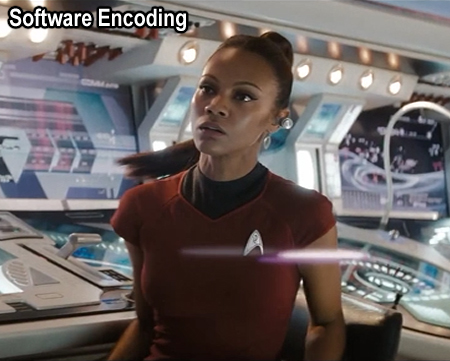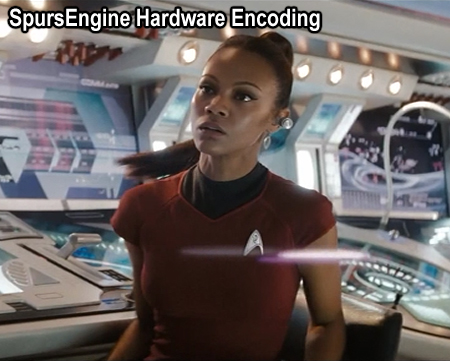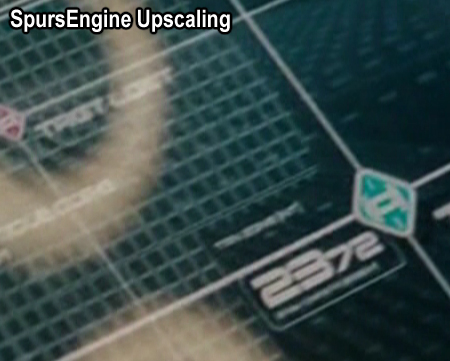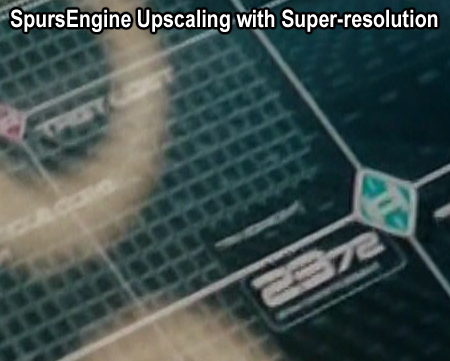The WinFast PxVC1100 Video Transcoding Card: Worth The Price?
Image Quality Comparison
First, let's scrutinize the standard definition results of the software encoder versus the hardware-accelerated WinFast PxVC1100. Keep in mind that the final result obtained from these two encoding methods is not a bit-for-bit identical copy. While we can control bit rates and some other variables to keep things on an even keel for comparison purposes, the final product is not exactly the same file. This is an important comparison because, if the quality suffers, then the WinFast card's speed advantage quickly becomes less relevant.
Upon very close inspection, it does appear as though there is a very slight difference in the end result. If you scrutinize the color of the uniforms, there is variance in the color-gradient dithering quality. This subtle discrepancy would probably be next-to-impossible to notice during actual video playback, but while the difference is subtle, it remains noteworthy.
Now let's examine the difference between the results when the video is up-scaled using the standard method and then again using the super-resolution option:
There is a more dramatic difference here, with the console display showcasing some sharpening artifacts in the version created with the super-resolution enhancement. In the second shot, we can see some details are faring a little better with crisper edges, like the insignia on the uniform. Most objects do have a sharper edge.
While the standard method appears smoother in these static screenshots, the super-resolution version does appear clearer during actual playback. Then again, the super-resolution version can suffer from sharpening artifacts during playback, especially on soft-edged phenomenon such as lens flares. In the end, of course, it is simply a matter of taste, but it's always nice to have the option to choose.
Get Tom's Hardware's best news and in-depth reviews, straight to your inbox.
Current page: Image Quality Comparison
Prev Page Encoding Performance Benchmarks Next Page CPU And Power Usage BenchmarksDon Woligroski was a former senior hardware editor for Tom's Hardware. He has covered a wide range of PC hardware topics, including CPUs, GPUs, system building, and emerging technologies.
-
paxiam I think for someone who does use their PC for encoding on a regular basis, this would certainly be a welcome addition, but otherwise, forget it.Reply -
paxiam I think for someone who does use their PC for video encoding on a regular basis, this would certainly be a welcome addition (the price is reasonable), but otherwise, forget it.Reply -
SpadeM These miscellaneous type of articles is what brightens up my day. Good to know that there aren't many products that launch and slip between the cracks of processor/graphics wars. Great job, nice article!Reply -
kumaiti Any info on future software support for this card? This card would be extremely useful if plug-ins for other video editor could be made.Reply -
4745454b Considering AMD has all but abandoned AVIVOm, the better question to ask is how this compares to CUDA. From what I've seen there aren't any problems with the output file. $200 is a bit much but at least it comes with the software. For those that have the $$$ to spare and do the encoding work, this is a big time saver. You could get the 620, mobo, and the card for probably about the same price as the 920 and a good Mobo. The difference is this setup will encode faster, and you can use the computer to do other things while encoding. I don't remember 100% for sure about it, but I think it will use less power as well.Reply -
apache_lives hmmm get the feeling this will go the way of the dedicated physx (only) cards...Reply
what we need is a more GENERALISED co-processor card/device for this type of workload and many other uses, Intel's Larrabee had a good *idea* going - easily programmable, multi-purpose etc -
g00ey I was rather thinking that this hardware could be useful in portable media players where it is designed to consume less power and allow playback of all video formats out there.Reply
Moreover, this could also be useful in HD video cameras that are either stand-alone HD video cams or fitted into mobile phones (such as the Samsung Omnia HD) or digital snapshot cameras.
I'm also thinking about its capabilities to be used in Live video applications that is streamed over the internet, either professional or teleconference applications such as SkypeHD.







